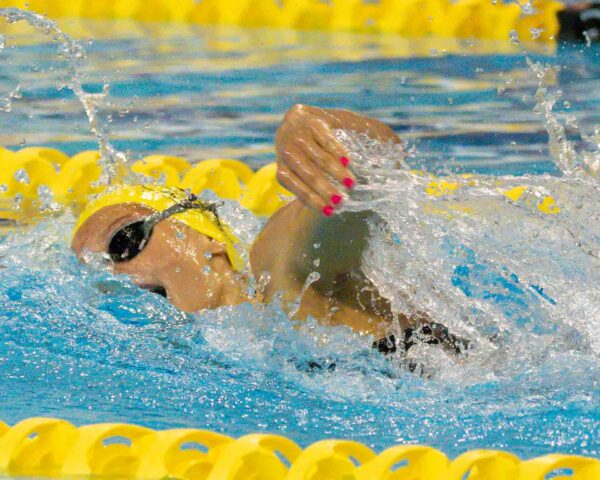The peculiar madness that comes whenever a golfer is faced with having to take a drop or a penalty was once again on show when this player saw his ball land on the ice.
When it isn’t your ball you can see through the madness – or just pull out your phone and video your playing partner being a berk.
This chap was enjoying a round of winter golf when he found a frozen water hazard.
But he wouldn’t heed the warnings of his friend and take a drop.
Instead, he decided to attempt to make it over a thin layer of ice to the ball.
He does eventually reach it, but rather than leave the icy pond with the ball he attempts to play it, losing the ball forever and making his ice bath an exercise in futility.
What you need to know about ‘playing it as it lies’
The “play it as it lies” rule is not as simple as it seems, and the Rules of Golf are more complicated than most realise.
A golf ball should generally be played where it falls, with no adjustments made to the overall setup. The “Ball Played as It Lies; Ball at Rest Lifted or Moved” Rule is found in USGA Rule No.9 of the Rules of Golf. This regulation forbids enhancing the lie, the region targeted for a swing, the play line or the area where the ball is to be dropped or positioned. You will be assessed a two-stroke penalty for playing from the incorrect place if this rule is broken.
Improving the condition in which a golf ball has come to rest is addressed in Rule 8.1 of the Rules of Golf. “Moving, bending or breaking anything growing or fixed,” pushing down or manipulating the surface the ball is on, creating or eliminating “irregularities” on the field and moving any kind of water—including dew or frost not sure if that extends to ice but logic dictates that it would—are all forbidden under the regulation.
Put another way, you can’t legally snap a bothersome branch that gets in the way of your backswing or step on some awkward grass that gets in the way of your swing path.
Never fear, though, because there are some exceptions.
You receive free relief if your ball becomes lodged in its own pitch mark on the fairway or rough. To get technical, if a portion of your ball is below ground, it is legally embedded. You can note the spot where your ball is embedded if you’re not sure, and you can check the ground, but if it turns out not to be embedded, you have to replace it without cleaning the ball.
If your ball is embedded, you can remove it and drop it as close to the hole as one club’s length, but no closer.
You may relocate your ball one club length from the closest point of total relief, but not closer to the hole, if you discover it in an area where you are unable to stand on playing ground, such as if your stance is on a cart path or sprinkler head.
It is not regarded as enhancing your lay if you unintentionally shift the ball during your stroke or backswing. “In making a stroke or the backward movement of (the) club for a stroke,” as long as the stroke is performed, is where the exemption is stated.
But unless you fall under one of those exclusions, there’s a fair possibility you’ll receive a one-stroke penalty if you move the ball when it’s at rest while you’re not performing a stroke.
When starting a hole, a player has the option to enhance the surface where the ball is teed. For instance, you may put the ball on any tee in the teeing area and use it to push down the grass surrounding it, eliminate weeds, or clear any loose obstacles. Furthermore, you are free to re-tee if the ball drops off at or before address, even if it fell off due to your inadvertent actions.
You are permitted under the putting green rules to mark your ball and replace it where it fell. Along with removing any loose obstacles like sand or mud, you may also fix the green in the putt line.
WATCH: Golfer hilariously attempts to play ball where it lies on thin ice Golf365.


















You must be logged in to post a comment Login